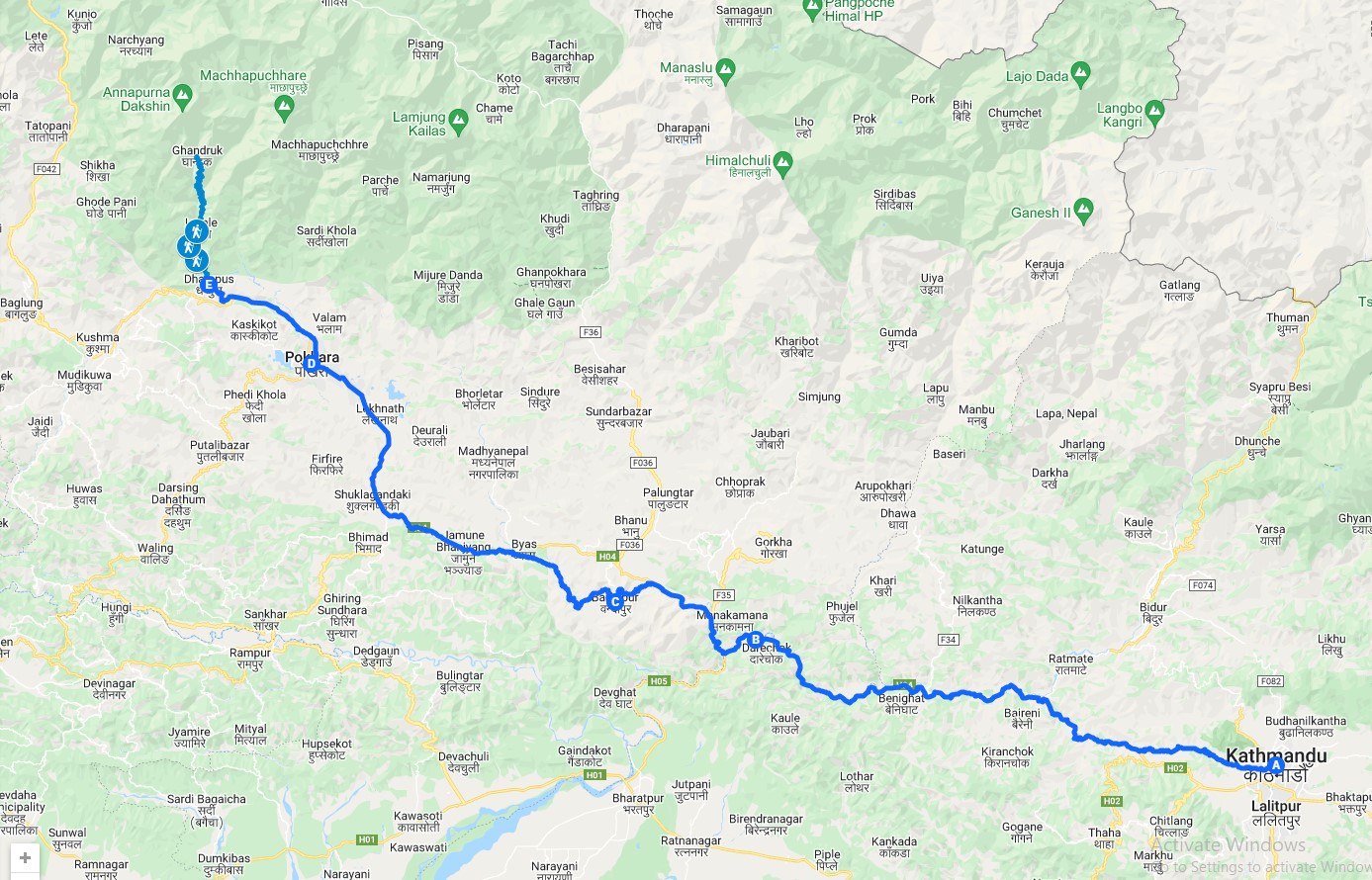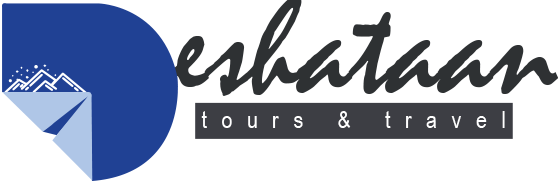
Experience Nepal’s highlights with the right amount of cultural exploration, trekking, and downtime in between. This tour combines visits to traditional villages with a multi-day trek through beautiful landscapes to breathtaking vistas in the Annapurna region. Begin and end in Kathmandu, where you can explore the city’s main attractions before flying home.
Highlights
- Before sipping chai in Durbar Square, visit Kathmandu’s famous Monkey Temple.
- Spending a night (or two) at the lovely Summit River Lodge on the way to Pokhara
- Enjoy the tranquillity of Bandipur, a hilltop town with breathtaking views.
- Discover the culture of the Gurungs, Nepal’s largest ethnic group in the Himalayas.
Note* (Contact us for Price)
Want to know more?
| Viber / WhatsApp | 9864014537 |
| Kathmandu office | 01-4439962, 01-4439963 |
| Price |
Trip Itinerary Brief
| Day | Highlights | Overnight |
| Day 1 | Welcome to Kathmandu | Kathmandu |
| Day 2 | Drive from Kathmandu to Summit River Lodge | Kurintar |
| Day 3 | Drive from Summit River Lodge to Bandipur | Bandipur |
| Day 4 | Drive from Bandipur to Pokhara, Evening Boat Tour | Pokhara |
| Day 5 | Drive from Pokhara to Phedi, Trek to Pothana (6,102 feet / 1,860 m) | Pothana |
| Day 6 | Trek from Pokhara to Landruk (5,135 feet / 1,565 m) | Landruk |
| Day 7 | Trek from Landruk to Ghandruk (6,365 feet / 1,940 m) | Ghandruk |
| Day 8 | Drive from Ghandruk to Nayapul, Drive to Pokhara | Pokhara |
| Day 9 | Fly from Pokhara to Kathmandu | Kathmandu |
| Day 10 | Depart Kathmandu |
Detailed itinerary
Day 1: Welcome to Kathmandu!
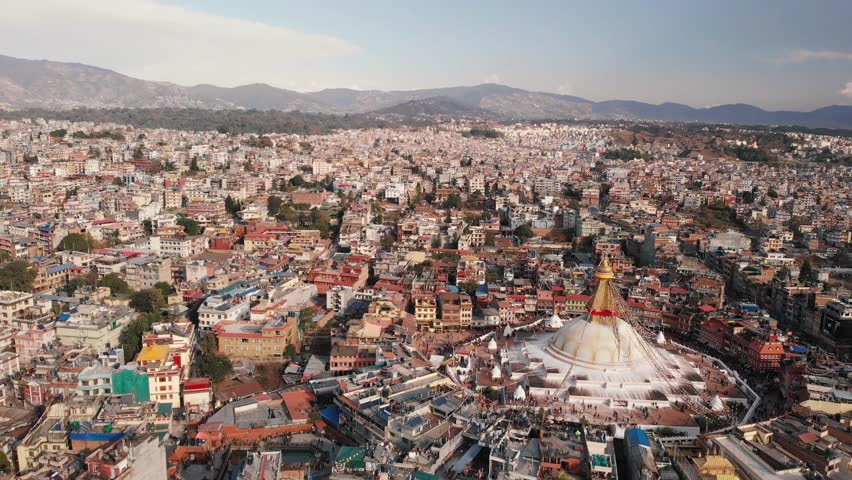
As you fly into Kathmandu, you’ll be treated to stunning views of the valley, the Himalayas, and the terraced fields below. After clearing customs, a representative will be waiting to help you navigate the narrow, winding streets of Kathmandu and get you settled into your hotel. After you’ve settled in, go see one of Kathmandu’s cultural highlights. In the evening, the tourist district of Thamel is a good place to get your first meal, with a variety of restaurants serving both Western and Nepali cuisine.
Kathmandu is well-known for its religious monuments. The city’s landscape is dotted with temples, monasteries, and stupas, particularly the Pashupatinath Temple and the Changu Narayan, both of which are known for their stunning, intricate religious artworks.
Day 2: Drive from Kathmandu to Summit River Lodge
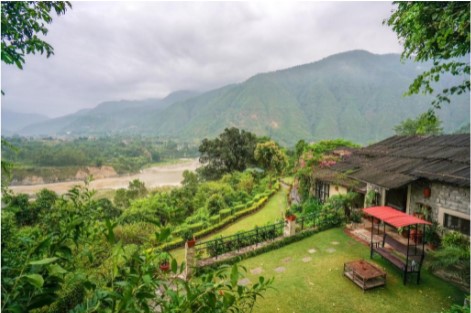
Today’s journey takes you on a three-hour scenic drive through Nepal’s foothills. You’ll walk along the Trishuli River’s banks, past traditional villages and terraced fields.
Kurintar is a small village surrounded by forested hills and fertile farmland. When you arrive, take a 30-minute walk through the charming village and across a bridge to Summit River Lodge, where you’ll spend the night. This lovely little resort has lovely forest views and a pool ready for a swim. (Don’t forget to bring your swimsuit!)
3 hours of driving (100 km)
Day 3: Drive from Summit River Lodge to Bandipur

After a late breakfast, you’ll depart for Bandipur, a historic town near Gorkha with spectacular views of the Annapurna range, including the eastern high peak, Lamjung Himal.
Bandipur, which is conveniently located between Kathmandu, Pokhara, and Chitwan, was once the center of trade between the lowlands and the highlands, as well as between British India and independent Tibet. Bandipur is still a popular mountain retreat today. Explore Bandipur’s former splendor, stroll through orange groves, admire the simple architecture, and gaze up at the pink-tinged Himalayan sky at dawn.
3 hours of driving
Day 4: Drive from Bandipur to Pokhara, Evening Boat Tour

After enjoying the sunrise and early morning, you’ll leave Bandipur and travel overland to Pokhara, one of the most beautiful places to see Phewa Lake and the magnificence of Machhapuchhre (6,977 m) rising behind it, creating an atmosphere of peace and magic. You can take a detour along the way to Begnas Lake, which is a lovely spot for a short walk or boat tour.
When we arrive in Pokhara, we will check into our hotel before heading out to explore the lakeside and relax over dinner.
Valley of Pokhara
At an elevation of 827 meters, Nepal’s second-largest city is nestled in a tranquil valley along the banks of Phewa Lake. It serves as the starting point for many of Nepal’s well-known treks and rafting trips. The valley that surrounds Pokhara is home to dense forests, rushing rivers, clear lakes, and world-famous Himalayan views.
3 hours of driving (79 km)
Day 5: Drive from Pokhara to Phedi, Trek to Pothana (6,102 feet / 1,860 m)
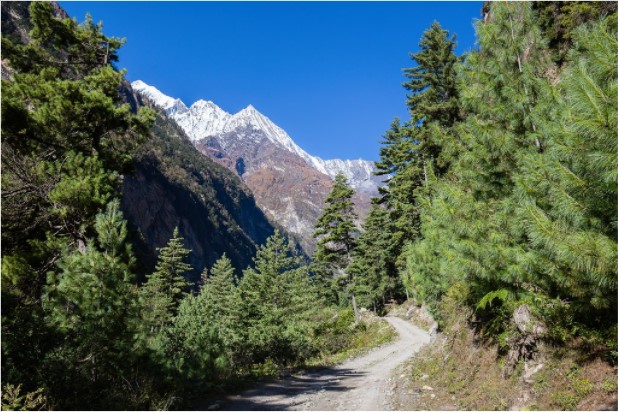
It’s the first day of your trip!
A jeep will be waiting for you in Pokhara to take you to Phedi, where the trek to Pothana begins. The path ascends through rhododendron, magnolia, oak, sandalwood, and pine forests until you reach the village of Dhampus. This is an authentic Gurung village from which you can enjoy magnificent views of the Annapurna ranges as well as notable peaks such as Lamjung Himal.
The trail ascends from Dhampus along a stone-paved path through more forests and mossy trees (keep an eye out for orchids). When you arrive in the small village of Pothana, you’ll find a variety of trekker amenities such as shops, teahouses, and eateries. Relax and take in the breathtaking mountain views.
Time to complete the trek: 4-5 hours (3.5 miles / 5.6 km).
Day 6: Trek from Pothana to Landruk (5,135 feet / 1,565 m)
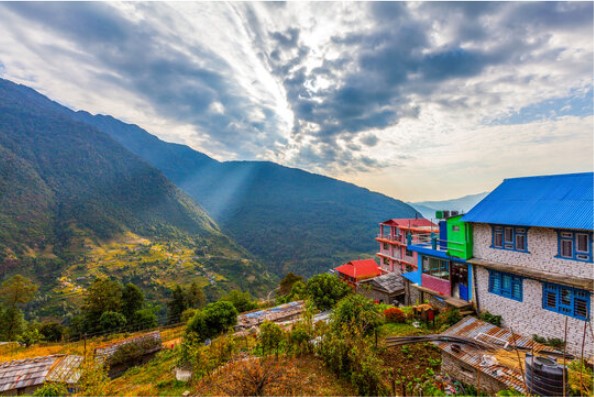
Following breakfast in Pothana, you will continue on a trail to Landruk via the ridge to Deurali. You’ll see rhododendron forests teeming with exotic birds as well as friendly Gurung villages like Chandrakot, Tolka, and Bheri Kharka. As you ascend, keep an eye out for a small lake and panoramic mountain views, particularly of the Annapurna South.
The trail then descends through more scattered forests and traditional villages until you reach Landruk, where you’ll spend the rest of the day.
Time to complete the trek: 2-3 hours (4.5 miles / 7 km).
Day 7: Trek from Landruk to Ghandruk (6,365 feet / 1,940 m)
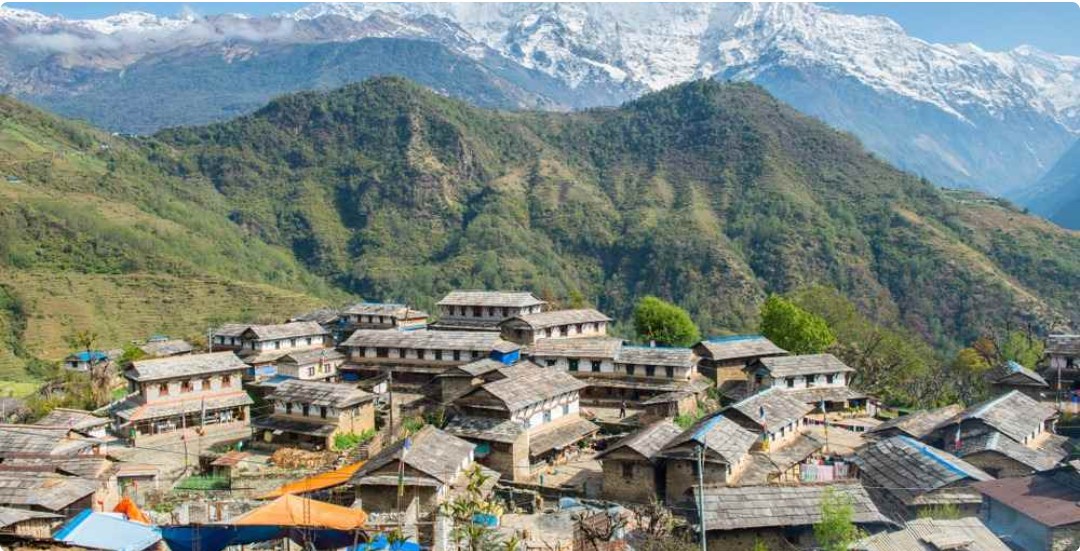
With breakfast in Landruk, you can enjoy the last moments of your higher elevation views. The trail then begins with a steep descent for about an hour towards the Modi Khola (river), followed by a steep ascent of 2-3 hours through scattered villages to Ghandruk, with great views of the Himalayas en route.
You’ll eventually arrive in Ghandruk, one of the largest Gurung settlements in western Nepal. You will have time to enjoy the landscapes and snow-capped peaks such as Gangapura, Machhapuchhre (Fishtail), and Mount Annapurna once you arrive.
Day 8: Trek from Ghandruk to Nayapul, Drive to Pokhara
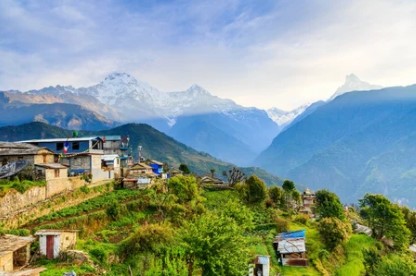
Begin the day with an early breakfast in Ghandruk, followed by a trek through small villages and picturesque rice fields to Nayapul. When you arrive, your private jeep transfer will be waiting to take you back to Pokhara.
Time spent driving: 1.5 hours
Time to complete the trek: 4-5 hours (5.3 miles / 8.6 km).
Day 9: Fly from Pokhara to Kathmandu

You may have time after breakfast to do more sightseeing, relax, or visit one of Pokhara’s coffee shops. You’ll be picked up from your hotel about 1.5 hours before your flight and taken to the domestic airport to catch your flight back to Kathmandu.
You will be transferred to your hotel in Kathmandu and will have the remainder of the afternoon and evening at your leisure. Explore Kathmandu’s streets by foot, bicycle, or rickshaw, looking for souvenirs or seeing anything you missed at the start of your trip.
In Kathmandu, choose from a variety of Nepali, French, Chinese, Vietnamese, and Middle Eastern dishes in the evening.
Day 9: Depart Kathmandu
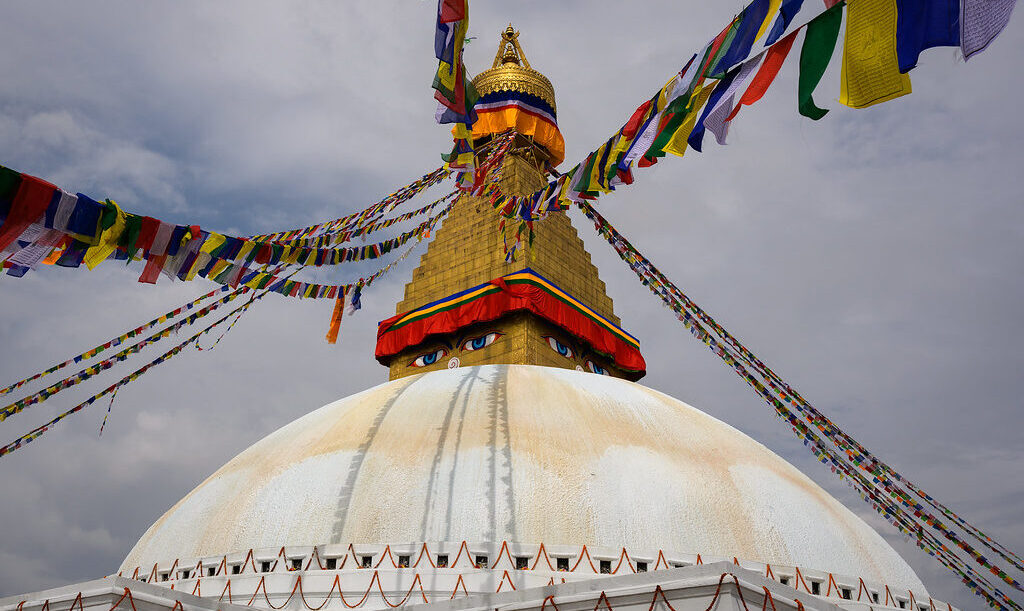
It’s time to say goodbye to Nepal. Enjoy your final moments in Kathmandu by having breakfast in a café, taking a final stroll through the narrow alleys and temples, and shopping for souvenirs. A driver will meet you at your hotel and transport you to the airport for your return flight home. It’s best to arrive at the airport at least three hours before your flight.
Famous food In Nepali Village
People in this region eat dhido (millet or barley cooked dough), potato curry, momo (dumplings), yak or goat or sheep meat, milk, thukpa, laping, or strong alcohol like tongba (millet juice) for their regular diet. This region also imports rice from other regions and consumes daal-bhat-tarkari from time to time.
Map
